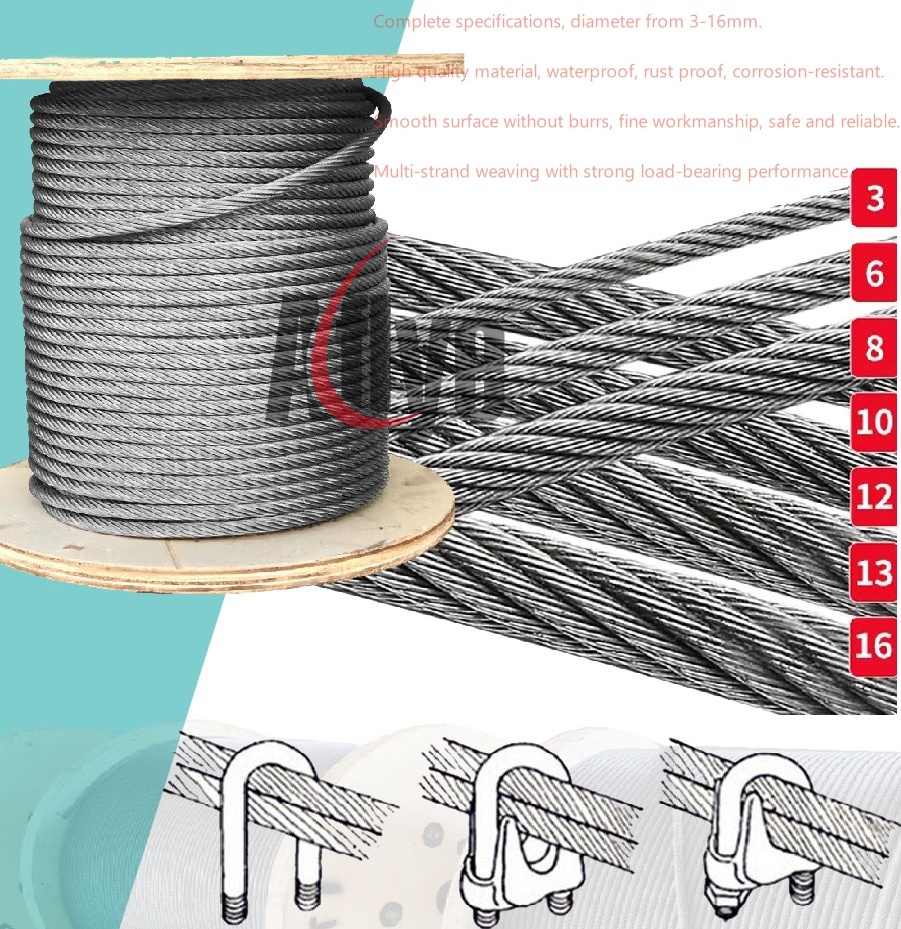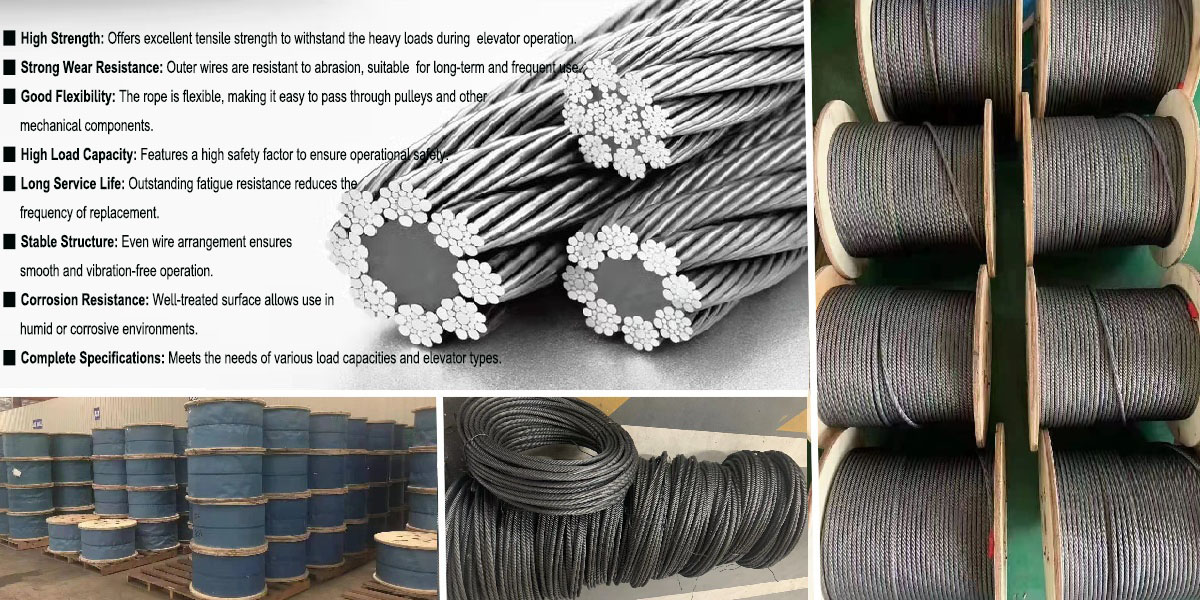Preparation Tools:
Safety railings, carts, 3-ton chain hoist, new steel wire ropes, long hemp ropes, and other common tools.
Step 1: Move the elevator car to align with the counterweight. Activate the car’s safety gear. Remove the guard cover and secure the steel wire ropes with wires to prevent misalignment during replacement. Attach a 3-ton chain hoist to the counterweight support frame in preparation for lifting the counterweight. The purpose is to adjust the counterweight buffer distance to meet requirements, generally increasing it by 200mm with a buffer stopper.

Step 2: Colleagues on the car top remove three steel wire ropes (only half can be removed at a time, leaving the other half for secondary safety protection). Colleagues outside the hoistway organize the old wire ropes, while machine room colleagues remove the rope ends and lower them using long ropes.
Step 3: Hoistway colleagues prepare the new rope ends and deliver the new steel wire ropes. Colleagues on the car top direct the threading and groove alignment process. Machine room colleagues pull the steel wire ropes, first attaching the counterweight side rope ends. When switching to the car side, secure the ropes in place using pliers to prevent slack and mark their positions. Then, send the steel wire ropes back to the hoistway colleagues to prepare the new rope ends. Pull the ropes back up and secure them with rope-end screws. Replace the ropes one by one from the outermost groove to the innermost.
Step 4: After replacing all steel wire ropes, adjust the tension. If any ropes are too loose, reattach the counterweight and prepare new rope ends. Install the rope guide device and secure the rope-end anti-rotation mechanism. Clear the tools, reinstall the main machine and wheel guards, and run the elevator in inspection mode. Confirm normal operation and mark the leveling position.

Steel wire ropes are a critical safety component in elevators. Different elevator wire rope companies or manufacturers design and manufacture elevators with steel wire ropes that meet specific technical requirements based on their standards. During replacement, it is essential to use steel wire ropes that match the original design of the traction sheave. When replacing the traction sheave, products that conform to the original design specifications must be used to avoid unnecessary losses.
In the renovation and replacement of steel wire ropes in older elevators, the traction sheave should also be replaced, or its grooves should be processed and adjusted. Otherwise, mismatches between the original sheave grooves and the diameter of the steel wire ropes may lead to mutual wear and slippage between the traction sheave and the ropes.When replacing steel wire ropes, all ropes used in each elevator must be replaced simultaneously.

